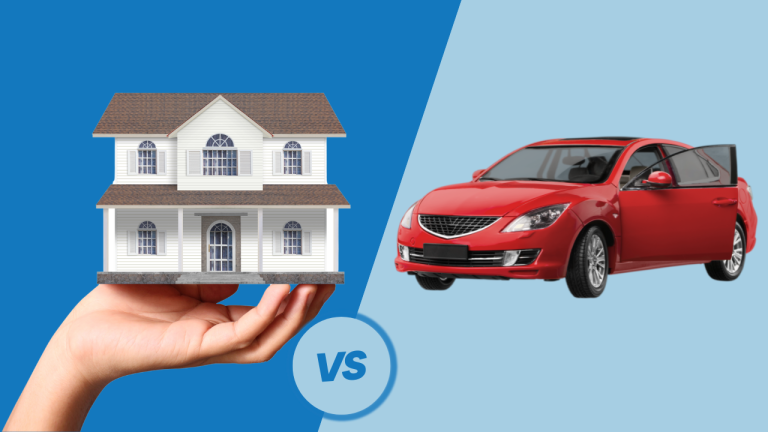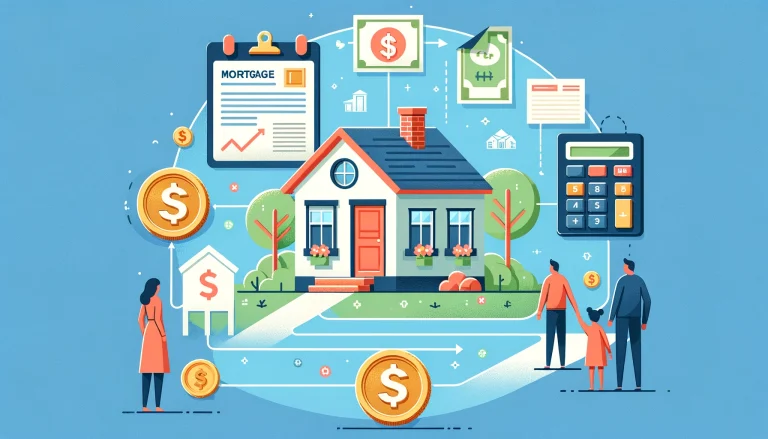When searching for credit options, seniors may ask, “How does a reverse mortgage work?” It’s a method of borrowing money available to homeowners aged 60 and above. Reverse mortgages enable them to take funds from their equity. What’s more, borrowers do not have to pay the funds back as long as they stay in their homes.
Some reverse mortgages are limited for specific purposes only. Other options allow borrowers to use the funds for any purpose. Moreover, reverse mortgages can provide funds in the form of a lump sum, monthly cash advances, or a line of credit. The amount borrowers receive depends on multiple factors.
The current pandemic has taken a toll on everyone’s finances. As a result, more elderly folks are relying on reverse mortgages as a financial lifeline. However, borrowers should consider several factors before taking out a reverse mortgage. If you’re planning on it, make sure you’re aware of the pros and cons of reverse mortgages.
What Is A Reverse Mortgage?

Most people take out a mortgage when buying a house. Then, the mortgage is repaid every month with additional interest. This is how the conventional mortgage works.
How does a reverse mortgage work? Instead of paying every month, borrowers receive money from their home equity. It usually doesn’t affect benefits such as Medicare and Social Security.
Even better, it doesn’t require repayment as long as the borrower lives in the home. The borrower is only obligated to do so if they die, sell their home, or lives somewhere else.
Borrowers keep the title of their home, another great way on how does a reverse mortgage works. This means they must pay fuel, maintenance, utilities, insurance, and other expenses.
Fortunately, reverse mortgages don’t require a minimum credit score. Also, they don’t usually affect benefits like Social Security and Medicare.
How Does A Reverse Mortgage Work?
The loan grows with monthly interest, but it cannot be deducted on income tax returns. Taking out a reverse mortgage also requires origination fees, servicing fees, and other costs.
A homeowner may take out a reverse mortgage if they meet certain criteria, such as:
- The youngest borrower is at least 62 years old
- The home is the borrower’s primary residence
- The borrower qualifies for the financial eligibility criteria set by the HUD
How does a reverse mortgage work with the amount a borrower may take out? The Federal Housing Administration (FHA) calculates the reverse mortgage limit based on these factors:
- The youngest borrower’s age
- The property’s current value
- The balance remaining on existing mortgages
- Interest rates
According to how reverse mortgages work, the loan has to be repaid when:
- The last surviving borrower dies
- The borrower moves to another residence.
- The borrower sells the property
Types Of Reverse Mortgages

Consider your needs when choosing among the kinds of reverse mortgages. It will affect how a reverse mortgage works, such as the amount borrowers may receive.
Some types may only be allocated for expenses related to their homes. These include home renovations, repairs, property taxes, and the lender’s other requirements.
You may apply for a reverse mortgage from local government agencies and nonprofit organizations. Alternatively, you may borrow from approved banks and credit unions.
Single-purpose Reverse Mortgages
These are the least expensive among the 3 types of reverse mortgages. They are offered by nonprofit enterprises and state government agencies.
The lender specifies how the reverse mortgage works for the borrower. They could limit its allocation to property taxes, repairs, or renovations only.
Low or moderate-income homeowners can qualify for these loans. However, single-purpose reverse mortgages aren’t available everywhere.
Proprietary Reverse Mortgages
Private companies can also provide reverse mortgages to homeowners. These are called proprietary reverse mortgages or jumbo reverse mortgages.
It got its namesake because it allows access to more funds than federally-insured alternatives. Still, there are similarities in how these reverse mortgages work.
Specifically, proprietary reverse mortgages and some federal options may offer a line of credit. Both of them could also provide a lump sum or monthly payments for borrowers.
Home Equity Conversion Mortgages (HECMs)

This is another type of backed by the US Department of Housing and Urban Development (HUD). Borrowers may use this federally-insured reverse mortgage for any purpose.
How does this reverse mortgage work? Borrowers must meet with a counselor from an agency approved by the government. Then, the representative will perform a financial assessment.
Together with other factors, this will determine the amount the borrower may receive. This amount is called the “initial principal limit”
Usually, borrowers may take out a maximum of 60% of this limit in the first year. Although, certain exceptions may affect the amount that borrowers receive.
Financial Assessment For HECMs
These usually provide greater loan advances than proprietary reverse mortgages at a lower total cost. Home equity conversion mortgages are calculated based on the following criteria:
- Borrower’s age
- Type of reverse mortgage
- Home’s appraised value
- Current interest rates
- Financial assessment
The lender may require funds set aside from the loan. This “set-aside” is allocated to expenses such as homeowner’s insurance, flood insurance, and property taxes.
Unfortunately, this will reduce the amount a borrower receives from the reverse mortgage.
Responsibilities Of HECM Borrowers
There are responsibilities included in how this reverse mortgage works. These HECM requirements are:
- Property taxes and homeowners insurance – Borrowers must pay these on time. These may be covered by their “set-aside.” In certain circumstances, they must also pay flood insurance.
- Principal residence – Borrowers must certify their principal residence every year. They risk foreclosure if they’re absent for 12 months due to healthcare or non-medical reasons.
- Proper Maintainance – Borrowers must keep their homes in good repair.
How Does It Differ From A Regular Mortgage?

It’s simple to understand how a reverse mortgage works. However, you must consider its differences from a conventional mortgage:
| Conventional Mortgage | Reverse Mortgage | |
| Purpose | Buying a home | Take funds from home equity |
| When it closes | You have lots of debt but little equity | You have little debt but lots of equity |
| During the loan | You have monthly payments that decrease your loan balance and increases your home equity | You receive monthly payments, a line of credit, or a lump sum. This increases your balance and decreases your equity |
| At the end of the loan | You owe nothing and you’ve built substantial equity | You may owe a significant amount and you barely have home equity remaining. |
| Closing costs | It’s based on your loan amount, and you may finance it for another loan. | It’s based on your home’s appraised value, and you can also finance this for another loan. |
Advantages Of Reverse Mortgages
How does a reverse mortgage work for your needs? Here are the possible benefits you may experience from reverse mortgages:
- You may compensate for a lack of income. In turn, reverse mortgages could help you manage expenses during retirement.
- It allows you to stay in your home. You may find reverse mortgages cheaper than moving to another residence.
- You may not have to pay income taxes. Ask a tax professional to make sure.
- The fair market value of your real estate may increase over time. Regardless, reverse mortgages make sure your debt never exceeds your home’s value.
- Your heirs can refinance the reverse mortgage to keep the home. On the other hand, they could refinance the balance. They could also return the title to the lender, so they can settle the mortgage loan. HECMs may allow your non-borrowing spouse to remain in the home under certain circumstances.
Disadvantages Of Reverse Mortgages
Of course, reverse mortgages have their downsides too. Keep these in mind when looking for reverse mortgages:
- It has costs including FHA insurance charges, closing costs, and lender fees.
- You may spend more on fixed-rate financing options.
- You may inadvertently violate the Medicaid and Supplemental Security Income (SSI) program and others.
- Reverse mortgages can be complicated, and you may risk foreclosure.
What To Look For When Shopping for Mortgages
Those are the basics of how a reverse mortgage works. If you have more questions, search the answers on the internet. Compare your options to find out which ones suit your needs.
Consider the following when looking for reverse mortgage options:
- Determine how your reverse mortgage works for your expenses. If you need to pay for property taxes and repairs, check the nearest agency.
- If you live in a higher-valued home, you may want to consider a HECM loan.
- Ask a counselor for a projected total cost of your selected reverse mortgage.
Summary
Reverse mortgages function differently from the regular 30-year fixed-rate mortgage. The borrower receives money from the mortgage lender instead of submitting monthly payments.
If you still have questions, you may search for answers online. These sites may further explain how a reverse mortgage works and elaborate on terms like mortgage interest.
Read every detail regarding your reverse mortgage options. Some sites provide a mortgage calculator, so you can determine how your reverse mortgage may work for you.












